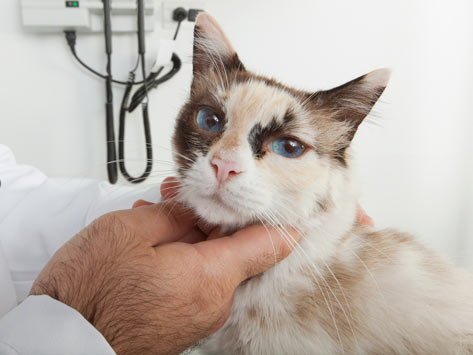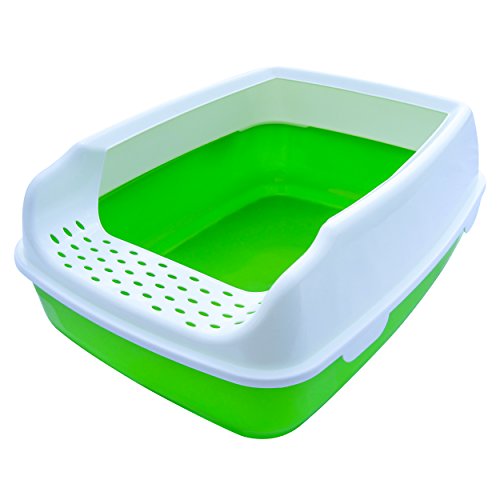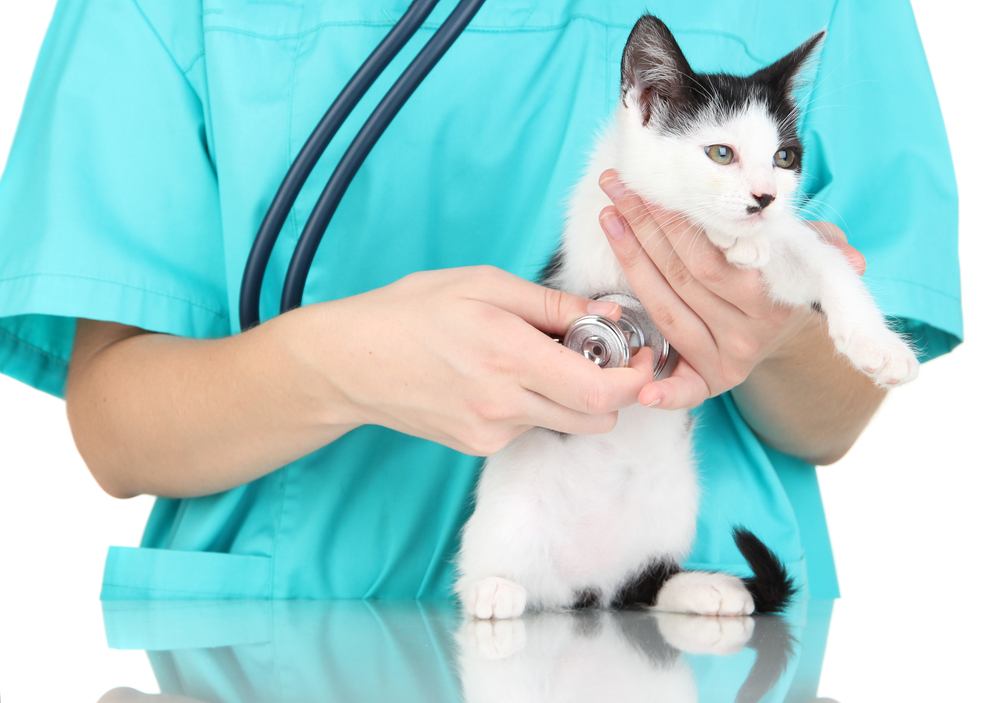

Pyelonephritis is a bacterial infection of the renal pelvis, the funnel-like part of the ureter in the cat's kidney.
Normally, if pyelonephritis takes place, it is due to an impairment of the cat's defenses: ureteral movement, blood supply to the kidneys, or the flap valves found between the kidney and ureters.
Pyelonephritis can also develop due to kidney stones or when microbes climb upward into the ureter, spreading a lower urinary tract infection to the upper urinary tract. Blockage of an infected kidney or ureter can lead to more serious complications: sepsis, a bacterial infection of the blood; or urosepsis, an infection of the blood resulting from decomposed urine being forced into the bloodstream.
The condition described in this medical article can affect both dogs and cats. If you would like to learn how pyelonephritis affects dogs, please visit this page in the PetMD health library.
Escherichia coli and Staphylococcus spp. are the most common bacterial causes for infection. Other bacteria which may lead to pyelonephritis include Proteus, Streptococcus, Klebsiella, Enterobacter, and Pseudomonas spp., which commonly infect the lower urinary tract, but which may ascend into the cat's upper urinary tract.
Your veterinarian will perform a complete physical exam on your cat, including a blood chemical profile, a complete blood count, a urinalysis and an electrolyte panel.
If your cat has a lower urinary tract infection already, this highly predisposes it to pyelonephritis. Your veterinarian may perform an ultrasound, or an X-ray of the urinary tract (excretory urography) to differentiate between a lower urinary tract infection and pyelonephritis.
Definitive diagnosis requires urine cultures obtained from the renal pelvis (funnel-like part of the ureter in the kidney) or parenchyma, or, as a last resort, histopathology from a renal biopsy.
A fluid sample from the renal pelvis, using a procedure called pyelocentesis, can also be performed through the skin (percutaneously) using ultrasound guidance, or during exploratory surgery. A specimen for culture might also be obtained from the renal pelvis. If the cat has kidney stones, an incision into the cat's kidney (a nephrotomy) will be necessary to acquire a sample of the mineral.
Antibiotics can be prescribed initially, and will be changed, if necessary, according to the results of the cat's urine culture and sensitivity profile. Surgery should be considered if your cat has pyelonephritis in the upper urinary tract, or if the urinary tract is obstructed.
If kidney stones are present, surgery should be performed to remove them, unless your veterinarian finds that the stones can be removed by dissolving them via a diet change (this only works for struvite kidney stones), or by using shock wave therapy to fragment them and allow them to pass from the animal's body.
To ensure progress is being made, your veterinarian will schedule a follow-up appointment and perform a urinalysis and urine cultures on your cat one week after the antibiotic treatment has begun. These tests are then repeated once the antibiotic course has ended -- at one and at four weeks -- to make certain the cat is not in remission.
 Eye Injuries in Cats
Corneal and Scleral Lacerations in Cats
In
Eye Injuries in Cats
Corneal and Scleral Lacerations in Cats
In
 Tumor Related to Vaccinations in Cats
Vaccine-associated Sarcoma in Cats
Reports of a s
Tumor Related to Vaccinations in Cats
Vaccine-associated Sarcoma in Cats
Reports of a s
 Why Do Cats Go Outside the Litter Box?
Cat owners love their cats a
Why Do Cats Go Outside the Litter Box?
Cat owners love their cats a
 Protozoan Infection (Trichomoniasis) in Cats
Trichomoniasisin Cats
The protozoa are single-cel
Protozoan Infection (Trichomoniasis) in Cats
Trichomoniasisin Cats
The protozoa are single-cel
 Aggression in Cats (Overview)
Cats are small, and often become the target of ot
Aggression in Cats (Overview)
Cats are small, and often become the target of ot
Copyright © 2005-2016 Pet Information All Rights Reserved
Contact us: www162date@outlook.com